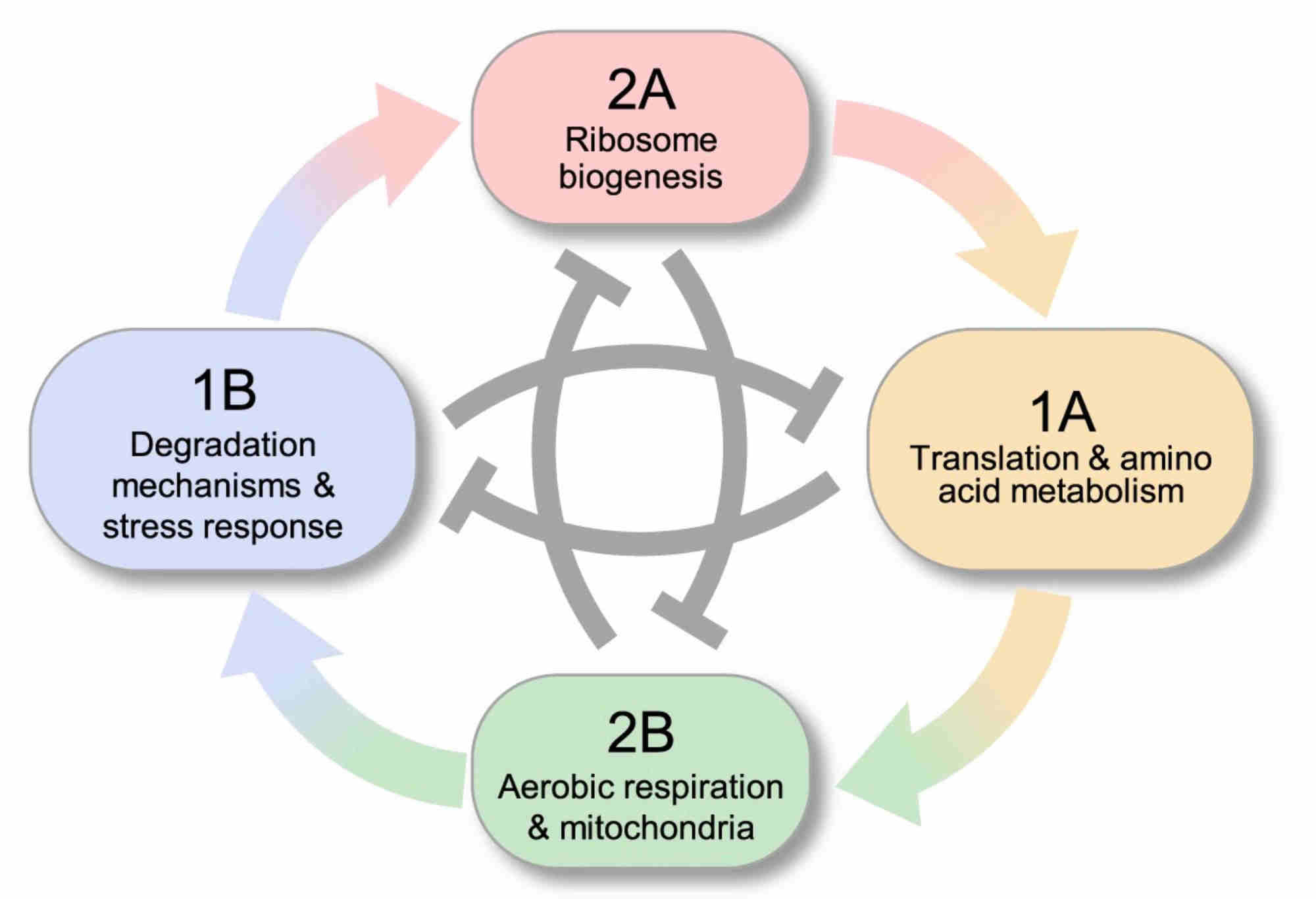Chinese researchers have decoded the metabolic cycle of yeast using mathematical analysis, revealing striking parallels with the ancient Chinese philosophy of yin and yang.
The study, led by Professor Li Lei from the Academy of Mathematics and Systems Science at the Chinese Academy of Sciences, redefines the understanding of metabolic phases in this single-celled eukaryote - one of the smallest model organisms used in the study of molecular life mechanisms.
While yeast metabolism has long been studied as a three-stage process, Li's team chose to use mathematical tools to reorganise it into four distinct yet interconnected phases.
Do you have questions about the biggest topics and trends from around the world? Get the answers with SCMP Knowledge , our new platform of curated content with explainers, FAQs, analyses and infographics brought to you by our award-winning team.
"These four phases aren't isolated; they overlap and transition sequentially over time," Li said on Tuesday. "Specific molecular mechanisms trigger the next phase while suppressing others - mirroring the concept of mutual promotion and restraint, known as xiang sheng xiang ke in traditional Chinese medicine. "
In the team's work published in March in the peer-reviewed journal NAR Genomics and Bioinformatics, Li said the four phases - named 1A, 1B, 2A, and 2B - each reflected a unique metabolic state.

Similarly, in traditional Chinese medicine, the "four symbols", or si xiang, theory provides a way to understand the natural world and the human body using four main principles. It is all about finding balance between passive and active forces - yin and yang - to keep everything healthy and harmonious. Between the yin and yang, there are two transitional phases, bringing the total to four.
To observe the cycles, the researchers cultivated wild yeast under nutrient-limited conditions with periodic oxygen and glucose supplies, establishing a stable metabolic loop that repeated every 4 1/2 hours.
When cellular energy is most abundant, yeast performs protein translation and amino acid synthesis. This phase was named 1A, similar to the yang in tai chi, a Chinese martial art and form of exercise. "If we liken the yeast's metabolic cycle to a day in the life of a human, this stage corresponds to the time of day when a person is most energetic, actively engaging in movement and thought," Li said.
As energy gradually depletes, yeast cells use mitochondria for aerobic respiration to generate energy more efficiently, while also consuming nutrients produced in other stages as a supplement. The researchers named this phase 2B.
The cell then enters a phase of degradation and recycling. Peroxides and other molecules harmful to cellular health, produced during aerobic respiration, are metabolised by corresponding enzymes. "This phase is akin to the human body entering sleep at night to repair and clear metabolic waste generated during the day. It is named 1B and corresponds to the yin in tai chi," Li said.
The following 2A phase serves as a transition from 1B to 1A, where yeast begins to accumulate energy for the next round of activity. Large quantities of ribosomal RNA are synthesised within the nucleolus, glucose levels in the cell are high, and yeast synthesises a large amount of the regulatory factor known as AICAR to stimulate energy production. The cell then re-enters the 1A stage, completing the cycle.
By examining the yeast metabolic cycle through these four stages, particular activities within the cycle become more evident. "For example, during the 2A stage when glucose levels are high, cells metabolise glycerol," Li said.
"This process is similar to how humans store excess energy as fat after consuming too much. In the following 2B stage, cells metabolise this glycerol again when energy is temporarily lacking."
"Sustainable metabolic cycles are essential for life," Li said. "Phase 1A and 1B mutually exclude each other, while 2A and 2B reciprocally inhibit - offering a molecular explanation for yin-yang interplay."
The team also drew parallels with seasonal rhythms: 2A resembled spring, or energy accumulation; 1A reflected summer, or vigorous growth; 2B echoed autumn, or yang receding; and 1B corresponded to winter, or dormancy.
"This cyclical transformation provides a molecular interpretation of the traditional Chinese medicine principles of mutual promotion and restraint," Li added.
To support this model, the researchers cited their 2009 finding of an inverse correlation between nucleolar rRNA generation and mitochondrial TCA activity - which corresponded to Phases 2A and 2B. "This finding also serves as evidence for updating the traditional three stages to four," Li said.
The research team employed a unique dual eigen-analysis technique to convert the entire metabolic process into quantitative mathematical formulas. Computational models showed how the cell evolved over time. All code and data are publicly available through an open cloud platform.
"As a model organism for metabolic studies, a thorough understanding of yeast metabolism can help us grasp more complex biological metabolic issues . The related mechanisms are of significant importance for understanding human metabolism and metabolic diseases ," Li said.
"Applying the same research methods to observe cancer cells may reveal life cycle-specific behaviours, accelerating targeted drug development."
Passionate about science? Dive deeper with the Dark Matters newsletter, a weekly in-depth analysis of China's rise in science, technology and military that goes beneath the surface. Sign up for free now.
More Articles from SCMP
Chinese graduates in UK turn to gig work amid job crunch: ‘it helps me survive’
How Hong Kong firms are weeding out ‘perfect’ job candidates in age of AI
What is the ‘Hong Kong Summer Viva’ campaign? And what deals are on offer?
This article originally appeared on the South China Morning Post (www.scmp.com), the leading news media reporting on China and Asia.
Copyright (c) 2025. South China Morning Post Publishers Ltd. All rights reserved.

Posting Komentar